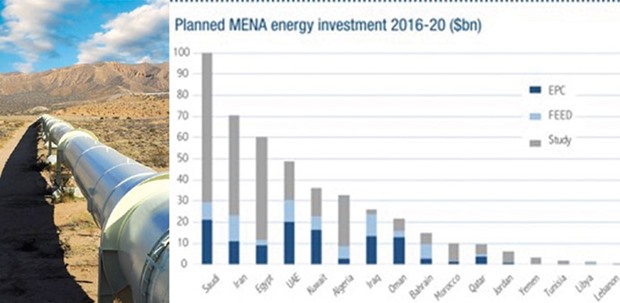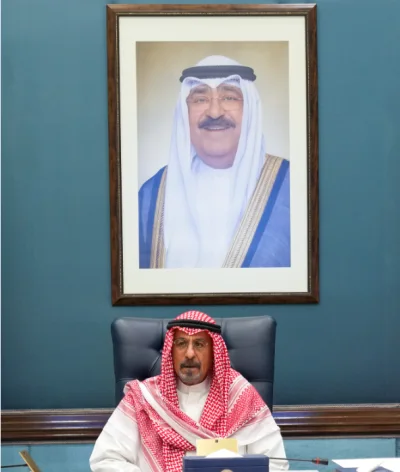Despite “uncertainties” in the region’s investment outlook, Apicorp estimates that the total committed and planned energy investments in the Mena region, including Iran, will reach $900bn over the next five years.
This, the multilateral development bank partly owned by Qatar said, would represent an increase of $145bn or 19% on 2015.
In a report titled “Mena Investment Outlook: Big Plans in Uncertain Times” Apicorp said the $289bn of investment has already been committed to projects under execution in the region, while an additional $611bn worth of development is planned.
Leading the investment drive will be Saudi Arabia, along with the UAE and Kuwait, which will look to invest across the energy value chain. Iraq and Iran will play catch-up and are determined to push their ambitious oil and gas plans forward, but will face many above-ground challenges.
In North Africa, Algeria has vowed to pump billions into its upstream sector. Much is also expected in Egypt as recent gas finds promise to meet rapidly rising power demand.
Renewable-energy projects will be at the forefront of efforts to meet rising power demand in Morocco, Tunisia and Jordan.
Dr Raed al-Rayes, Apicorp deputy chief executive and general manager, said, “Global investments in oil and gas fell by 20% in 2015 compared with 2014, one of the biggest drops in history. However, against this trend, we expect the Mena (Middle East and North Africa) region to continue investing heavily as major energy-exporting countries expand the size of their energy sectors and strengthen their positions within global markets.”
Despite the increasing investment plans within the Mena region, Apicorp report also highlights several challenges and constraints that will prove pivotal over the medium term.
Global investments in the oil and gas sector are closely interlinked with oil prices. Although some Mena countries, including Saudi Arabia, Iran, the UAE and Kuwait, announced that they would go ahead with investment plans despite low prices, other countries with low fiscal buffers and competing pressures on its revenues, particularly Iraq, may have to reconsider their ambitious capacity-expansion programmes.
In addition, financing the projects has become more challenging. Standard & Poor’s Ratings has indicated that credit worthiness in the Mena region has deteriorated over the past six months, with average sovereign ratings of ‘BBB’.
Although recent efforts to attract foreign investment have seen some success, political and economic concerns mean investors will be cautious.
The region is also in turmoil. Persistent conflicts in Syria, Iraq and Libya, and the emergence of a new coalition in Yemen, is reshaping the geopolitical landscape.
Conflicts and instability in these countries will keep investments at bay in the near term, the report said. Regional instability is unlikely to recede in the immediate future, and investors will be wary of spill-over effects in neighbouring countries, it added.
Dr Bassam Fattouh, an energy sector specialist and adviser to Apicorp, said, “2015 was unsettling for the Mena region at a time of slower global economic growth and low oil prices. Many GCC governments have announced that budget deficits and public expenditure will be tightened in response. But, governments will prioritise critical investments in their energy sectors.
“Saudi Arabia has the largest committed and planned investments in the medium term, while the UAE and Kuwait have ambitious programmes throughout the value chain. The GCC will use their investments to maintain the status quo as the major supplier of energy to the rest of the world. Iran and Iraq will also play catch-up, especially as investments in Iran start flowing back after years of sanctions.”

..


